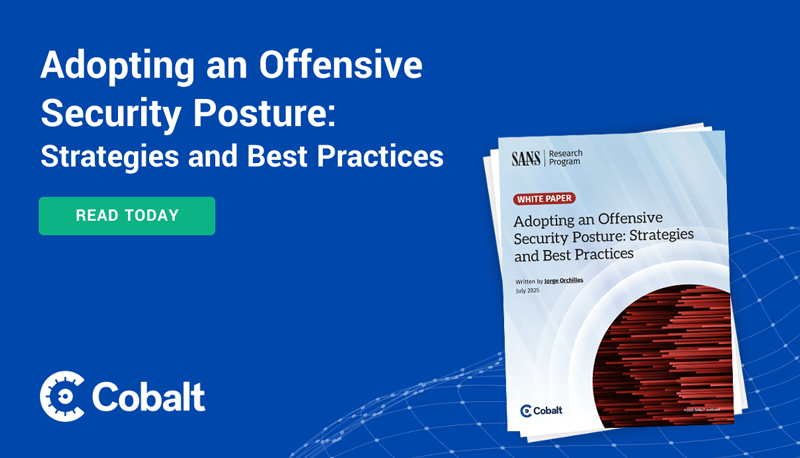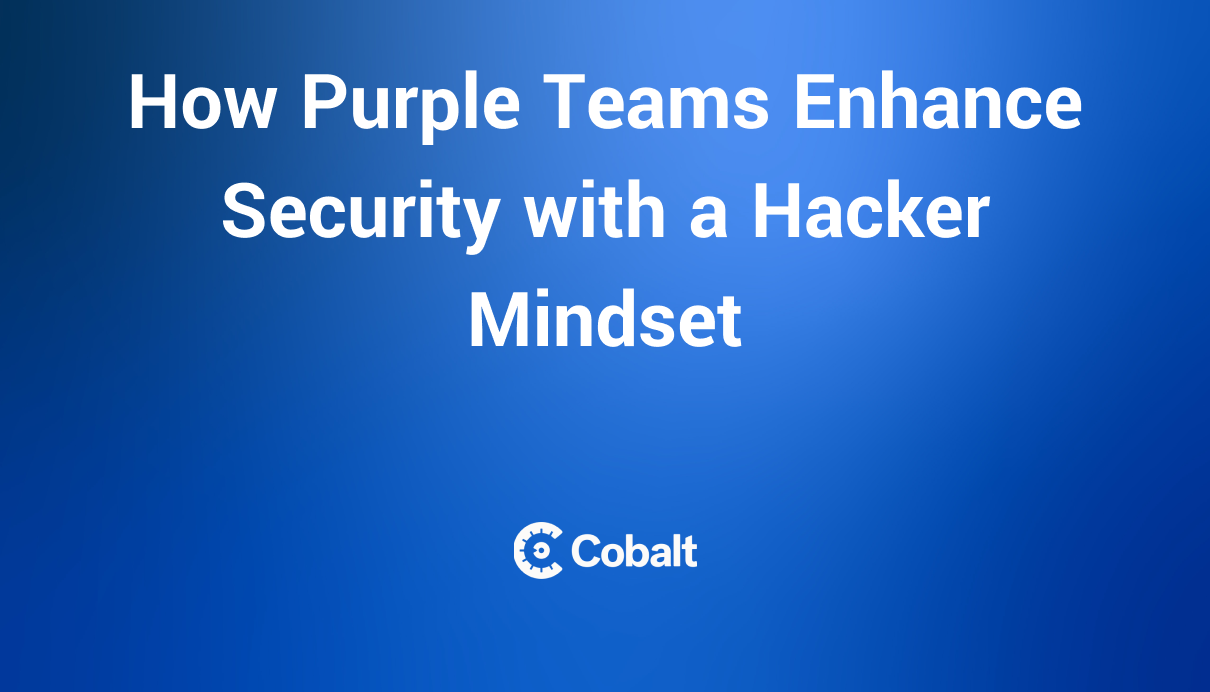A business's success relies not only on its ability to innovate but also on its commitment to safeguarding its digital assets. With the exponential growth in cyber threats, a passive or reactive stance on security is a recipe for disaster.
Offensive Security is the proactive answer to this challenge. This approach embraces the belief that to create the best defense, one must think like an attacker.
Below are some cybersecurity strategies tailored to different business sizes, emphasizing the need for continuous evolution in security measures as businesses expand.
Unpacking Offensive Security
Offensive Security is an advanced proactive strategy to safeguard computer systems, networks, and applications. Contrary to traditional defensive mechanisms, offensive security operates on a forward-leaning premise: identify and rectify vulnerabilities proactively, thereby staying ahead of potential attackers.
When it comes to cybersecurity, reactive measures are no longer sufficient. The importance of offensive security can be articulated through the following critical advantages:
- Proactive Threat Management: As cyber threats evolve at an unprecedented rate, offensive security equips organizations to preemptively address these challenges, ensuring a fortified digital infrastructure.
- Unearthing Undetected Vulnerabilities: Beyond merely tackling known threats, offensive security diligently probes to reveal undiscovered vulnerabilities, allowing for timely remediation.
- Upholding Stakeholder Trust: An active stance on security reaffirms an organization's commitment to data protection, fortifying stakeholder trust and confidence.
- Cost Efficiency: Early detection and mitigation of vulnerabilities negate potential financial repercussions from data breaches.
Techniques Driving Offensive Security
- Penetration Testing: Also called "pentesting," this method simulates cyberattacks on systems to identify exploitable vulnerabilities, ensuring systems are robust against potential breaches.
- Vulnerability Scanning: Through automated processes, this technique identifies and reports known vulnerabilities, facilitating prompt remediation.
- Phishing Simulations: These are tailored exercises designed to mimic real-world phishing attempts, assessing an organization's susceptibility and enhancing user awareness.
- Red Teaming: More holistic than penetration testing, red teaming exercises emulate multifaceted cyberattacks to evaluate an organization's resilience comprehensively.
- Adversary Emulation: This advanced method replicates actions of genuine threat actors, allowing organizations to gauge their defenses against specific, realistic threats.
While offensive security is crucial for organizations of all sizes, let's begin by examining its unique relevance to small businesses, which form the backbone of many economies.
Small Business Cybersecurity: Laying the Foundation
From outdated software to unprotected networks, small businesses frequently face threats like malware, ransomware, and phishing attacks. Recognizing these threats is the first step in crafting a robust defense.
Here's a breakdown of how small businesses can fortify their defenses:
Awareness Training and Continuous Learning
Employees can inadvertently become the weakest link in the cybersecurity chain by clicking on malicious links, using weak passwords, or even unintentionally sharing sensitive information, which can pave the way for breaches. Attackers capitalize on an employee's lack of knowledge with tactics like spear-phishing.
Awareness training not only educates employees about potential threats but also empowers them. With the right knowledge, they can be proactive about security by identifying, reporting, and preventing potential security threats.
But it's not enough to conduct a one-off training session. Employees should always be equipped with the latest knowledge and strategies to combat emerging threats.
Scanners: Automated Vigilance
Scanners are software tools that tirelessly scour for weak points, from software vulnerabilities to misconfigurations. They not only detect but also notify relevant teams of any weaknesses, ensuring swift action and remediation. Therefore, they must be equipped with the latest databases and heuristics to recognize new threats.
To ensure scanners remain effective, regular software updates are imperative. These updates refine the tool's capabilities and expand its recognition patterns, ensuring no new threat goes undetected.
Compliance Beyond the Checklist
Even small businesses often have compliance obligations, whether from industry standards or data protection regulations. Depending on where a company operates or where its clients are located, there may be multiple regulatory landscapes to navigate.
For instance, companies dealing with European clients must consider the General Data Protection Regulation (GDPR) implications. At the same time, American businesses might grapple with regulations like the Health Insurance Portability and Accountability Act (HIPAA).
Is Pentesting Necessary for Small Businesses?
Pentesting involves simulating cyberattacks on a company's systems, networks, and applications to identify vulnerabilities before real attackers can exploit them. Conducted by ethical hackers or specialized cybersecurity firms, pentesting is a controlled environment exploration, ensuring no actual harm comes to the business infrastructure.
While small businesses benefit immensely from pentesting, mid-size firms, with their expanding operations and larger digital footprints, have their own set of challenges and advantages.
Mid-Size Firms: Building a Robust Security Framework
Mid-size businesses may experience a growing threat landscape as they and their digital footprints expand. A larger customer base and more significant operational complexity mean there's more data to lose, making security breaches potentially more catastrophic.
As firms grow, they may face more sophisticated cyber threats like Advanced Persistent Threats (APTs). APTs are prolonged, targeted cyberattacks orchestrated by adept adversaries, often seeking specific data or intellectual property. These threats operate stealthily, exploiting advanced tools and zero-day vulnerabilities. While mid-sized firms possess valuable assets, they might lack the robust defense systems of larger corporations, making them attractive targets.
Customer Assurance
Today, data breaches regularly make headlines, meaning mid-size firms must prioritize security to maintain and bolster their reputation. A breach suggests negligence, impacting customer trust. On the contrary, a robust cybersecurity posture conveys commitment, diligence, and responsibility, which are invaluable for brand reputation.
Safeguarding sensitive data isn't merely about meeting regulatory standards; it's about upholding the business's core values and ensuring its long-term viability.
Scanners to Automate Security
Mid-size firms must go beyond basic defense strategies, especially as their technological infrastructures typically become more complex, with multiple servers, cloud solutions, and varied software applications.
What's needed are multifaceted scanning tools that don't just detect but also analyze the nature of threats, discern patterns, and predict potential vulnerabilities. These comprehensive tools should be capable of endpoint protection, network monitoring, and even behavioral analytics to provide deeper insights and holistic defense mechanisms.
Timely updates are also crucial. As cybercriminals innovate, the tools they deploy mutate and evolve. Scanners equipped with auto-update features ensure they're consistently fed the most recent threat intelligence. By staying updated, these tools can recognize and combat emerging threats even in the face of novel cyber-attack strategies.
Compliance with Regulations and Standards
As mid-size firms expand their reach and potentially tap into international markets, the complexity of compliance landscapes they navigate broadens. This expansion means dealing with a tapestry of local, regional, and international data protection laws, each with unique requirements and stipulations. For example, a mid-size firm operating in the European and U.S. marketplaces would need to simultaneously adhere to GDPR and CCPA regulations, among others.
The specific industry a firm operates within can also dictate its compliance requirements. For example, the Payment Card Industry Data Security Standard (PCI DSS) for the finance industry and the Health Insurance Portability and Accountability Act (HIPAA) in healthcare.
A comprehensive compliance posture not only minimizes legal risks but can also be leveraged as a unique selling point. Demonstrating a proactive commitment to compliance tells customers and business partners that the firm is serious about data integrity, security, and ethical business operations.
Pentesting for Mid-Size Firms
Pentesting simulates a real-world cyberattack on an organization's digital assets. For mid-sized firms in a transitional phase — perhaps introducing new IT infrastructure, expanding digital services, or venturing into new markets — such testing offers invaluable insights. By actively attempting to exploit vulnerabilities in a controlled environment, pentesting reveals potential weak points that might have gone unnoticed with standard vulnerability assessments.
As companies grow beyond mid-size operations, the intricacies of their cybersecurity needs increase exponentially. Large corporations, or enterprises, with multifaceted operations spread across different regions and sectors, face a distinct range of threats and require a comprehensive security approach.
Enterprise-Level Security: Comprehensive and Continuous
Large corporations often have multifaceted operations spread across different regions and sectors. From sophisticated APTs aiming for prolonged data infiltration to high-profile ransomware attacks seeking substantial payouts, understanding the range and nature of potential threats is the first step in developing a resilient defense.
Red Teaming
These are specialized groups within (or hired by) the organization tasked with playing the role of an adversary. Their objective is to probe, challenge, and ultimately breach the company's defenses, thereby revealing vulnerabilities that may have been overlooked.
Blue Teaming
Enterprises may also bring in Blue Teams, which often have a deep understanding of the company's infrastructure, operations, and business needs. Blue Teams are the defenders that monitor, detect, and respond to security threats.
Purple Teaming
Rather than confronting teams, enterprises may use collaborative Purple Teams, which merge offensive strategies and defensive tactics. This synergy ensures that security measures are robust and continuously refined based on real-world, real-time testing and feedback.
Continuous Testing
Integrated into frequent software releases, continuous testing aligns with DevOps principles, ensuring every update undergoes immediate security scrutiny. Leveraging current threat intelligence, this approach adapts defenses to the latest threat landscape. Automated tools simulate varied attacks 24/7, providing instant feedback to security teams.
This proactive model ensures consistent regulatory compliance and a security posture that's dynamic, current, and resilient.
Adversary Emulation
Adversary emulation goes a step further than Red/Blue Teaming by replicating genuine cyber adversaries' tactics, techniques, and procedures (TTPs). This could be a known cybercriminal group, a nation-state actor, or another known threat entity. Scenarios are built around how a particular adversary operates. This includes the tools they use, the sequence of their actions, and their end goals (e.g., stealing specific data or disrupting operations).
Scanners
Enterprise-grade scanners employ sophisticated algorithms and vast databases to sift through countless data points. The feedback from these scanners isn't merely about pointing out vulnerabilities. They offer actionable insights, prioritizing threats based on potential impact and suggesting optimal remediation steps.
These scanners aren't standalone tools. They can integrate with other security solutions in an enterprise's arsenal. For example, upon detecting a vulnerability, a scanner could trigger a patch management tool to deploy necessary updates or inform a security information and event management (SIEM) system to monitor affected areas closely.
Pentesting for Enterprises
Enterprises operate on a larger scale with more intricate IT infrastructures.
This means multiple points of access, layered software applications, and a variety of hardware. Pentesting in such environments requires a wider scope, analyzing interconnected systems to unearth vulnerabilities that might be overlooked in simpler setups.
Pentest as a Service (PtaaS) aids large IT networks with support from the Cobalt Core, including hundreds of certified pentesters to assist in navigating through the complexity.
Future-Proofing with Offensive Security
It's clear – offensive security is relevant to businesses of any size. Those planning to transition to their next growth phase must ask: How will our digital infrastructure evolve? How will our data management needs change? How might our threat landscape shift?
The offensive security mindset is not just about employing advanced tools or hiring top-tier pentesters. It's about fostering a culture of continuous learning, adaptability, and foresight that recognizes that tomorrow's cyber threats might look nothing like today's.
Offensive security is more than a department—it's a philosophy that can guide strategic decision-making, ensuring that security remains a step ahead, agile, and responsive as the business landscape changes.
Ready to future-proof your business against evolving cyber threats? Reach out to Cobalt for comprehensive security services and industry-leading Pentest as a Service (PtaaS) platform.










